Showing Spotlights 25 - 32 of 319 in category All (newest first):
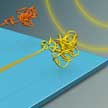 Great effort has been applied on the controllable synthesis of ideal carbon nanotubes (CNTs). However, it's almost impossible to directly synthesize pure semiconducting CNTs by an in situ catalytic reaction alone, without any post-separation, when only small amounts of metallic CNTs may cause catastrophic device shorting failures. That is why the synthesis of CNTs with consistent chirality and high density is facing a bottleneck. A group of researchers in China have creatively proposed a novel method by entangling an individual decimeter-long CNT with a diameter of 2 nm into a large tangle with high density and consistent chirality.
Great effort has been applied on the controllable synthesis of ideal carbon nanotubes (CNTs). However, it's almost impossible to directly synthesize pure semiconducting CNTs by an in situ catalytic reaction alone, without any post-separation, when only small amounts of metallic CNTs may cause catastrophic device shorting failures. That is why the synthesis of CNTs with consistent chirality and high density is facing a bottleneck. A group of researchers in China have creatively proposed a novel method by entangling an individual decimeter-long CNT with a diameter of 2 nm into a large tangle with high density and consistent chirality.
Dec 28th, 2016
 Carbon nanotubes (CNTs) being highly electrically conductive along the tube axis, have gained great research interests in recent years for connecting two conducting electrodes at the nanoscale - where the CNTs can be integrated into a micro- or nanoelectronic system. Therefore, the orientational control of CNTs has drawn a great deal of research interest in nanotechnology. Researchers now have developed a technique to bridge two electrical conductors by assembling CNTs guided by liquid crystals.
Carbon nanotubes (CNTs) being highly electrically conductive along the tube axis, have gained great research interests in recent years for connecting two conducting electrodes at the nanoscale - where the CNTs can be integrated into a micro- or nanoelectronic system. Therefore, the orientational control of CNTs has drawn a great deal of research interest in nanotechnology. Researchers now have developed a technique to bridge two electrical conductors by assembling CNTs guided by liquid crystals.
Nov 1st, 2016
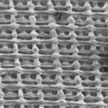 Carbon nanotube enabled nanocomposites have received much attention as a highly attractive alternative to conventional composite materials due to their mechanical, electrical, thermal, barrier and chemical properties such as electrical conductivity, increased tensile strength, improved heat deflection temperature, or flame retardancy. In new work, researchers report the fabrication of highly conductive carbon nanotube/polylactic acid nanocomposites used as 3D printable conductive inks for fabrication of conductive scaffold structures applicable as liquid sensors.
Carbon nanotube enabled nanocomposites have received much attention as a highly attractive alternative to conventional composite materials due to their mechanical, electrical, thermal, barrier and chemical properties such as electrical conductivity, increased tensile strength, improved heat deflection temperature, or flame retardancy. In new work, researchers report the fabrication of highly conductive carbon nanotube/polylactic acid nanocomposites used as 3D printable conductive inks for fabrication of conductive scaffold structures applicable as liquid sensors.
Oct 6th, 2016
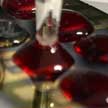 Researchers demonstrate a completely new micro-array design that is looking at capture and detection of circulating tumor cells (CTCs) from an entirely new perspective. As an alternative to invasive biopsies, capturing CTCs is of great interest for evaluating cancer dissemination, predicting patient prognosis, and also for the evaluation of therapeutic treatments, representing a reliable potential alternative to invasive biopsies and subsequent proteomic and functional genetic analysis. The new approach is based on a static isolation in the form of micro-arrays of single-walled carbon nanotubes.
Researchers demonstrate a completely new micro-array design that is looking at capture and detection of circulating tumor cells (CTCs) from an entirely new perspective. As an alternative to invasive biopsies, capturing CTCs is of great interest for evaluating cancer dissemination, predicting patient prognosis, and also for the evaluation of therapeutic treatments, representing a reliable potential alternative to invasive biopsies and subsequent proteomic and functional genetic analysis. The new approach is based on a static isolation in the form of micro-arrays of single-walled carbon nanotubes.
Oct 5th, 2016
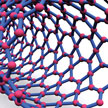 In view of the scientific and technological potential of CNTs, it is of immense importance to know who should be credited for their discovery. In the present article, we have made an attempt to give a glimpse into the discovery and early history of this fascinating material for our readers. Carbon nanotubes possess unique combination of extraordinary mechanical, electronic, transport, electrical and optical, properties and nanoscale sizes making them suitable for a variety of applications ranging from engineering, electronics, optoelectronics, photonics, space, defence industry, medicine, molecular and biological systems.
In view of the scientific and technological potential of CNTs, it is of immense importance to know who should be credited for their discovery. In the present article, we have made an attempt to give a glimpse into the discovery and early history of this fascinating material for our readers. Carbon nanotubes possess unique combination of extraordinary mechanical, electronic, transport, electrical and optical, properties and nanoscale sizes making them suitable for a variety of applications ranging from engineering, electronics, optoelectronics, photonics, space, defence industry, medicine, molecular and biological systems.
Jun 3rd, 2016
 In new work, an international team of researchers describes the drawing and Raman characterization procedure developed for placing single-walled carbon nanotubes (SWCNTs), proof of SWCNT alignment, optimization of the drawing parameters, and the subsequent placement in predefined lithographic structures for the demonstration of electrical conductivity. In essence, the team developed a simple nanopen for drawing and placing aligned single or multiple rod like molecules nanometrically.
In new work, an international team of researchers describes the drawing and Raman characterization procedure developed for placing single-walled carbon nanotubes (SWCNTs), proof of SWCNT alignment, optimization of the drawing parameters, and the subsequent placement in predefined lithographic structures for the demonstration of electrical conductivity. In essence, the team developed a simple nanopen for drawing and placing aligned single or multiple rod like molecules nanometrically.
Mar 2nd, 2016
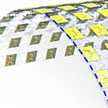 Researchers present materials and device design/fabrication strategies for an array of highly stable and uniform SWCNT-based stretchable electronic devices consisting of capacitors, charge-trap floating-gate memory units, and logic gates (inverters and NAND/NOR gates). The researchers' detailed material, electrical, and mechanical characterizations and theoretical analysis in mechanics provide useful insights in the design and development of SWCNT-based wearable electronic systems.
Researchers present materials and device design/fabrication strategies for an array of highly stable and uniform SWCNT-based stretchable electronic devices consisting of capacitors, charge-trap floating-gate memory units, and logic gates (inverters and NAND/NOR gates). The researchers' detailed material, electrical, and mechanical characterizations and theoretical analysis in mechanics provide useful insights in the design and development of SWCNT-based wearable electronic systems.
May 13th, 2015
 Supercapacitors offer an alternative source of energy to replace rechargeable batteries for various applications, such as mobile electronics and electric vehicles. Among the various types of supercapacitors, carbon nanotube based devices have shown an order of magnitude higher performance in terms of energy and power densities. The bottleneck for transferring this technology to the marketplace, however, is the lack of efficient and scalable nanomanufacturing methods. Researchers have now developed a new scalable method to to directly spraycoat CNT-based supercapacitor electrodes.
Supercapacitors offer an alternative source of energy to replace rechargeable batteries for various applications, such as mobile electronics and electric vehicles. Among the various types of supercapacitors, carbon nanotube based devices have shown an order of magnitude higher performance in terms of energy and power densities. The bottleneck for transferring this technology to the marketplace, however, is the lack of efficient and scalable nanomanufacturing methods. Researchers have now developed a new scalable method to to directly spraycoat CNT-based supercapacitor electrodes.
Mar 3rd, 2015
 Great effort has been applied on the controllable synthesis of ideal carbon nanotubes (CNTs). However, it's almost impossible to directly synthesize pure semiconducting CNTs by an in situ catalytic reaction alone, without any post-separation, when only small amounts of metallic CNTs may cause catastrophic device shorting failures. That is why the synthesis of CNTs with consistent chirality and high density is facing a bottleneck. A group of researchers in China have creatively proposed a novel method by entangling an individual decimeter-long CNT with a diameter of 2 nm into a large tangle with high density and consistent chirality.
Great effort has been applied on the controllable synthesis of ideal carbon nanotubes (CNTs). However, it's almost impossible to directly synthesize pure semiconducting CNTs by an in situ catalytic reaction alone, without any post-separation, when only small amounts of metallic CNTs may cause catastrophic device shorting failures. That is why the synthesis of CNTs with consistent chirality and high density is facing a bottleneck. A group of researchers in China have creatively proposed a novel method by entangling an individual decimeter-long CNT with a diameter of 2 nm into a large tangle with high density and consistent chirality.
 Subscribe to our Nanotechnology Spotlight feed
Subscribe to our Nanotechnology Spotlight feed





